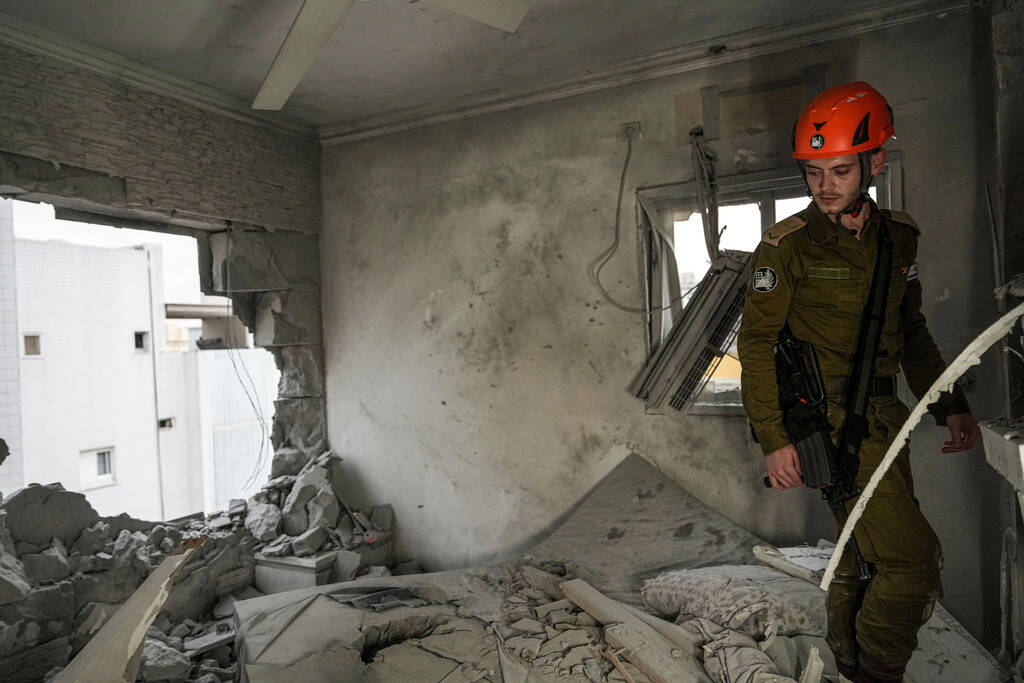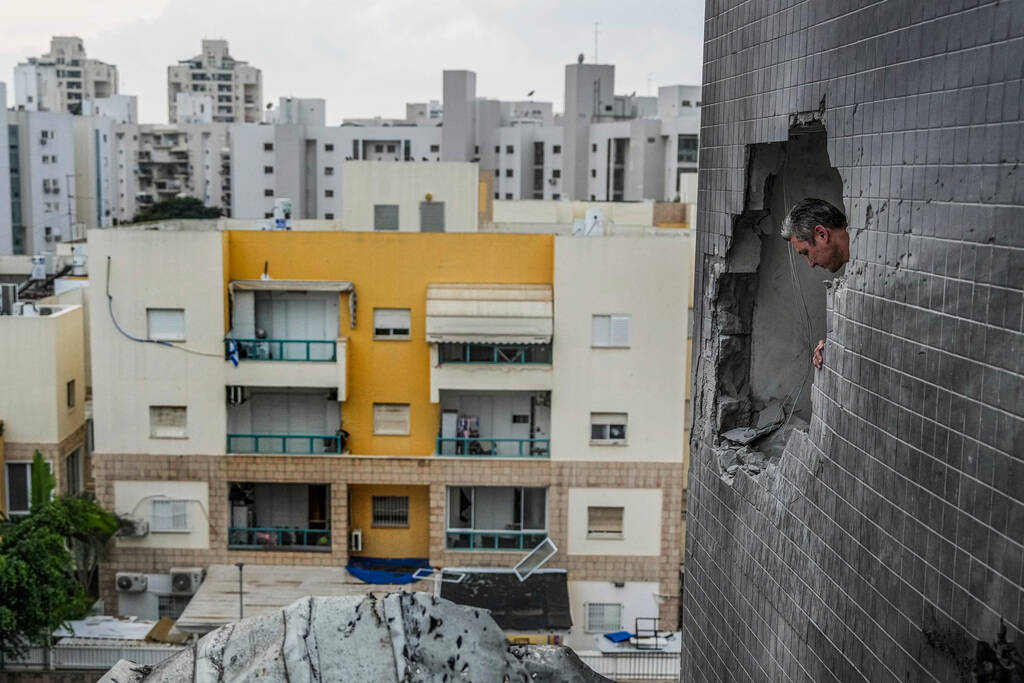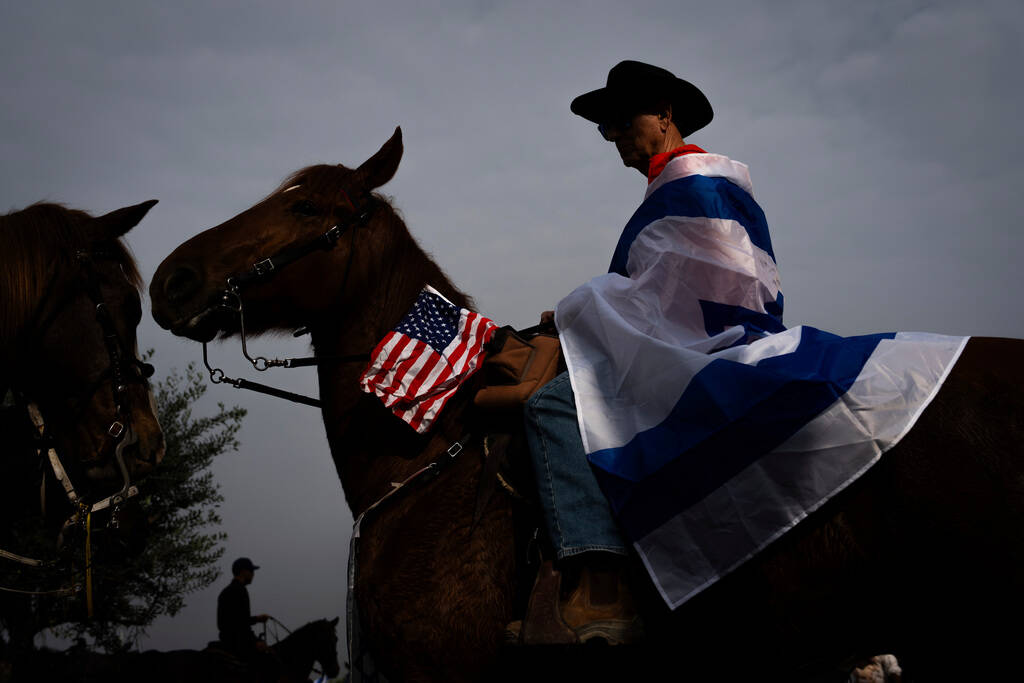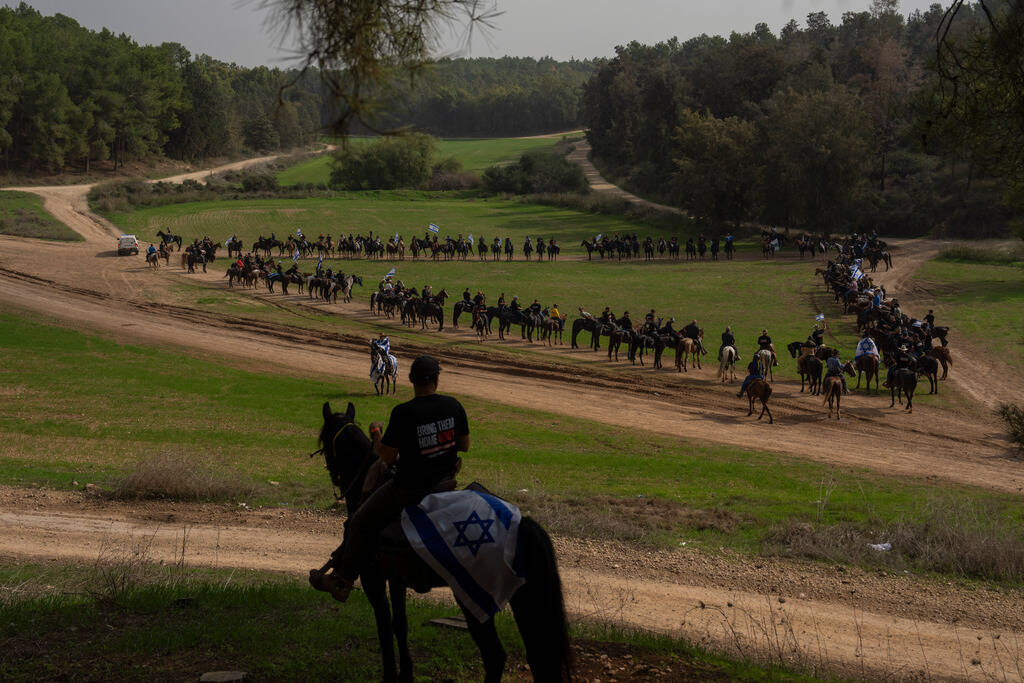Gaza’s 2nd-largest city faces more Israeli strikes
KHAN YOUNIS, Gaza Strip — Israel intensified its bombardment in and around Gaza’s second-largest city Tuesday.
The military said its forces were “in the heart” of Khan Younis, which has emerged as the first target in the expanded ground offensive into southern Gaza that Israel says aims to destroy Hamas.
Military officials said they were engaged in the “most intense day” of battles since the ground offensive began more than five weeks ago, with heavy firefights also taking place in northern Gaza.
Under U.S. pressure to prevent further mass casualties in the conflict with Hamas terrorists, Israel says it is being more precise as it widens its offensive into southern Gaza after obliterating much of the north.
Residents said troops advanced following heavy airstrikes to Bani Suheila, a town just east of Khan Younis.
Satellite photos from Sunday showed around 150 Israeli tanks, armored personnel carriers and other vehicles just under 4 miles north of the heart of the city.
Israel ordered the full-scale evacuation of northern Gaza in the early days of the war and has barred people who left from returning. In the south, it has ordered people out of nearly two dozen neighborhoods in and around Khan Younis. That further reduced the area where civilians can seek refuge in central and southern Gaza by more than a quarter.
Israel says it must dismantle Hamas’ extensive military infrastructure and remove it from power in order to prevent a repeat of the Oct. 7 terrorist attack that ignited the war. The surprise assault through the border fence saw Hamas and other Palestinian terrorists kill about 1,200 people, mostly civilians, and capture some 240 men, women and children.
The military says it makes every effort to spare civilians and accuses Hamas of using them as human shields as the terrorists fight in dense residential areas, where they have labyrinths of tunnels and bunkers, as well as rocket launchers and sniper nests.
‘Third phase’ of ground operation
Military Chief of Staff Herzi Halevi acknowledged that Israeli forces use heavy force against civilian structures, saying terrorists keep weapons in houses and buildings so fighters in civilian clothes can use them to fire on troops.
“Striking them requires significant use of fire, both to target the enemy but also to, of course, protect our forces,” he said. “Therefore the forces operate powerfully.”
Halevi said his forces had begun the “third phase of the ground operations,” moving against Hamas terrorists in the south after seizing much of the north.
In northern Gaza, the military said its troops were battling Hamas militants in the Jabaliya refugee camp and the district of Shujaiya, capturing Hamas positions and destroying rocket launchers and underground infrastructure.
The battles in the north signaled the tough resistance from Hamas since Israeli forces moved in on Oct. 27. The military says 86 of its soldiers have been killed in the Gaza offensive and that thousands of Hamas terrorists have been killed.
Hamas is deeply rooted in Palestinian society, and its determination to end decades of open-ended Israeli military rule over millions of Palestinians is shared by the vast majority, even those opposed to its maximalist aim of eventually destroying Israel, and its attacks on Israeli civilians.
Even after weeks of bombardment, Hamas’ top leader in Gaza, Yehya Sinwar — whose location is unknown — was able to conduct complex cease-fire negotiations and orchestrate the release of more than 100 Israeli and foreign hostages in exchange for 240 Palestinian prisoners last week.
Hamas terrorists have also kept up their rocket fire into Israel.
U.S.: Too soon to pass judgment
Israel ordered the full-scale evacuation of northern Gaza in the early days of the war and has barred people who left from returning. An unknown number of people — likely a few hundred thousand — remain in the north, but the rest of Gaza’s population of 2.3 million is squeezed into the 90 square miles of central and southern Gaza.
The Health Ministry in Gaza said the death toll in the territory since Oct. 7 has surpassed 15,890 people. The ministry does not differentiate between civilian and combatant deaths.
An Israeli army official provided a similar figure for the death toll in Gaza on Monday. The official said at least 15,000 people have been killed, including 5,000 militants, without saying how the military arrived at its figures. The military says 86 of its soldiers have been killed in the Gaza offensive.
White House national security adviser Jake Sullivan said Monday that it was too soon to pass judgment on Israeli operations, but that it was unusual for a modern military to identify precise areas of expected ground maneuvers and ask people to move out, as Israel has done in Khan Younis.
“These are the kinds of steps that we have asked them to undertake,” he said.
Since moving into the south, the Israeli military has ordered people out of nearly two dozen neighborhoods in and around Khan Younis. That further reduced the area where civilians can seek refuge by more than a quarter.
For the past two days, aid distribution — mainly just supplies of flour and water — has been possible only in the city of Rafah, at the far south by the border, the U.N. said. Locations deeper inside Gaza, including Khan Younis, Deir al-Balah and northern Gaza, could not be reached because of fighting.
Leaflets dropped by the Israeli military over Khan Younis in recent days warn people to head farther south toward the border with Egypt, but they are unable to leave Gaza, as both Israel and neighboring Egypt have refused to accept any refugees.
Meeting with hostage families tense
Family members of hostages still held in Gaza held tense talks with Israeli Prime Minister Benjamin Netanyahu and the war cabinet Tuesday.
Observers present said more than 100 people attended the nearly three-hour meeting. Some relatives shouted at cabinet members.
During the gathering, five hostages released during the truce shared harrowing details of their experience.
One spoke of Hamas fighters “touching” female hostages, and another said terrorists shaved off a male hostage’s body hair to humiliate him, according to a group representing the hostages’ families. Others said they were deprived of water.
“It was not a relaxed discussion,” said Noam Peri, whose 80-year-old father is still hostage. “After 60 days, people are tired and worried.”
———
Magdy and Jeffery reported from Cairo. Associated Press writers Lee Keath in Cairo and Jon Gambrell in Dubai, United Arab Emirates, contributed.

























